- Home
- Patrick Robinson
The Shark Mutiny (2001) Page 14
The Shark Mutiny (2001) Read online
Page 14
When it came back, 12 mimutes later, the quality was not better, just bigger, and again Lt. Ramshawe peered through his magnifying glass. He could tell from the for’ard and aft guns the scale of the ship, which he calculated was in excess of 7,000 tons. If it was that big, it was a destroyer, and if it was a destroyer, the range of countries that might own it was relatively small. It wasn’t American because he knew precisely where all the U.S. destroyers were in the area. It wasn’t British, and it certainly wasn’t Russian. The Iranians did not own a destroyer, nor did the Egyptians, nor the Omanis. The Indians had two working in the area, and five more Russian-built Rajput Class were all accounted for.
Could it possibly be the Chinese Sovremenny, the mine-laying Hangzhou, now returning for whatever reason to Bandar Abbas? Jimmy Ramshawe looked again, pulled up the Sovremenny pattern on his computer. The helicopter was in the right position for a start. He could see that. It was parked way forward, and higher than the aft deck, right above the ASW mortars. He could also make out the distinctive gap between the fire control front dome (F-Band) and the air-search radar top plate.
“If I’m not very much mistaken,” muttered Jimmy, “the bloody Chinks are back, and the bloody Hangzhou is creeping up the coast toward the gap in the minefield…I wonder what the hell their game is?”
He checked the pattern over and over. The quad launchers for the Sunburn missiles, the two aft-mounted Gadfly surface-to-air launchers. All in the right places. This was her, no doubt about that, the most capable warship in China’s new Blue-Water Fleet, Hangzhou, built brand-new in the cold Baltic, North Yard, Saint Petersburg. And here she was again, in much warmer waters, returning to the scene of her plain and obvious mine-laying crimes.
Lieutenant Jimmy Ramshawe did not like it. This was a heavily armed warship that would make a fair match for anyone. He could not see the point of talking to Admiral Borden, who would probably remind him of her right to be in Iran’s waters, if that was okay with Iran.
But it was not okay with Jimmy Ramshawe. Bloody oath, it wasn’t. And he picked up the secure line to Admiral Morgan in the White House.
“How sure are you, Lieutenant?”
“Certain, sir. This is the Hangzhou, and no bloody error. Looks like she’s headed back to Bandar Abbas.”
Arnold Morgan was, for a change, hesitant. He had already ensured that the U.S. Navy had issued a formal warning to all countries not to interfere with the minesweeping, but he had not been prepared for the sudden arrival of the most important warship in the Chinese Navy, the one that had helped lay the mines in the first place.
“When do we get new pictures, Jimmy?” he asked.
“Probably in three hours, sir.”
“God knows where she’ll be by then. She’s fast, and she’s dangerous. Leave it with me. And don’t forget to get a decent report in to your boss.”
The President’s National Security Adviser was concerned. And he paced his office, pondering the intent of the Commanding Officer of the Hangzhou. If she was there merely as an observer, the United States might have to put up with that. But she was so big and powerful, she would simply have to be warned off while the Pondicherrys were working.
Arnold Morgan knew the two Admirals commanding the Constellation and John C. Stennis Groups would be flying off their decks F-14 Tomcats, and the FA-18E Super Hornets. That’s what they did on patrol. That’s what they were there for, to intimidate any enemy. And these supersonic strike fighters found no difficulty in doing that.
The Admiral had not yet asked for details, but he was certain the Tomcats would be making their presence felt. What the Navy did not need was a large Chinese warship prowling around in those waters with its massive antiaircraft capability—the two aft-mounted SA-N-7 Gadfly SAMs. Not to mention its two twin 130mm guns, and its four 30mm/65 AK 630 guns—the ones that fire a withering 3,000 rounds a minute.
No. The U.S. Navy and its fliers could not put up with that. Particularly since the Hangzhou also sported two twin heavyweight 533mm torpedo tubes, right below the fire-control radars for the Gadfly missiles. She was also equipped with a strong antisubmarine capability, two 6-barrel RNU 1,000 ASW mortars. Her principal surface-to-surface weapon was the SS-N-22 Sunburn (Moskit 3M-80E), a supersonic Raduga, fired from port/starboard quad launchers. Range: 60 nautical miles, at Mach 2.5.
She was a formidable ship, no doubt about that. And Arnold Morgan guessed she had been detailed to escort the original mine-laying Chinese frigates, and possibly even the Kilos, out of harm’s way. He also guessed, correctly, that she had been refueled from a tanker out of the Bassein River, which he found, frankly, infuriating.
“And now, where the hell’s she going?” he growled to the empty room. “It had better be far away from any of our current operations. I don’t expect the Indians will be too pleased to see her, either.”
The question was, What to do? “I guess we can’t just sink the biggest ship in the Chinese Navy without risking a world-class uproar, which will send gasoline prices even higher,” he pondered. “But she has to leave the area. That’s for sure. Before someone gets trigger-happy.”
He picked up his secure line to Admiral Dixon and outlined the problem.
“Sir, I do agree. She cannot be allowed to remain in our area of operations. I have warned the Chinese, and everyone else to that effect. I think we have to take the view that the Chinese and the Iranians, in the absence of any denials, are plainly in breach of every world peace convention in mining the strait. I propose to issue one more formal warning, directly to Beijing. Either they get that destroyer out of the area, or we’ll do it for them.”
“You saying sink it, Alan?”
“Nossir. I’m saying cripple it. With minumum loss of life.”
“Using?”
“A submarine, sir. Stick one of those MK 48s right into her stern. Blow the shaft, steering and propulsion all in one hit. Probably take out her missile launchers too with a couple of shells. Then let their friends from Iran come out and tow her in. That way we hold on to world opinion, with very few casualties, and a well-deserved warning to China to stay the hell out of the strait.”
“What if she returns fire?”
“Sink her, sir. Instantly.”
“Good call, Alan. Let’s go.”
040500MAY07. USS Shark. 24.40N 50.55E.
Speed 25. Depth 100. Course 352.
Lieutenant Commander Dan Headley, his early watch just one hour old, called for a transcript of the new orders just in from the carrier. “Hard copy twice, Jack,” he called down to comms. “One for the CO.”
Five minutes later he read the instructions, to the USS Shark, ordering them to locate and track a Sovremenny-Class destroyer, probably flying the flag of the People’s Liberation Army/Navy. It had been picked up by the overheads moving slowly up the southernmost coast of Iran, course approximately two-seven-zero. According to Fort Meade, right now at 0530 it should be somewhere to their nor’noreast, maybe 27 miles up ahead.
Shark’s sonar room had already located a ship right in that area, and the ESM had reported an occasionally transmitting Russian radar. The flag was correct. She was going slowly. The Sturgeon-Class American submarine would catch her inside 90 minutes. Their orders were simply to get in contact with the destroyer, track her silently and await further instructions.
Lieutenant Commander Headley ordered flank speed, course three-six-zero, which should put him in the correct position sometime before 0700. He had someone awaken the CO to apprise him of the situation and was mildly surprised when Commander Reid did not show up in the control room anytime in the next 45 minutes. “Guess he trusts me,” thought the XO. “Even though he has known me for only five days.”
In any event they rushed on north, remaining just below periscope depth, leaving a wake on the surface, which no one was around to see. At 0640, Lt. Commander Headley slowed down to come to PD and took an all-around look at the surface picture. Sure enough, out on the horizon, right on their one o�
�clock, was a large warship. Dan Headley had already memorized the profile of the Sovremenny, and this was her, large as life, steaming on six miles off the coast of Iran, as if she owned the place. The engine lines on the 8,000-ton double-shafted destroyer matched the GTZA-674 turbines on the computer model.
He went back below the surface, dictated a signal to the flag and had it transmitted, announcing he was in contact and was proposing to track the destroyer two miles astern pending further orders.
Dan ordered a course change…“Come right seven degrees…down all masts.” At which point a frisson of excitement ran through the submarine, as it always does when any potential quarry is sighted, even in exercises. Now, with the most dangerous warship in the Chinese Navy in their sights, USS Shark came unmistakably to life.
At 0700 the Commander came into the control room. He talked to his XO for a few minutes, bringing himself into the picture. But he did not assume command. Rather he left “to find some breakfast,” and asked Dan to let him know if anything important occurred.
By now they were running line astern to the destroyer, four miles behind. But the Chinese ship was moving faster now, still heading northwest along the Iranian coast. As far as Dan could tell she was not transmitting and did not even have her sonars switched on, which the Kentucky-born officer thought was “kinda eccentric.” Given she’s just mined the Strait of Hormuz and the business half of the planet Earth is seriously pissed off with the ship and all who are sailing on her.
Nonetheless, the Hangzhou ran on at a steady 20-knot speed, which again Dan Headley thought was ridiculous. By varying her rate of knots between say four and 25, it would have been much more difficult for a submarine to track her. Alternatively, at her quiet, low speed, she might have actually heard the submarine, charging along astern, trying to catch up, making a noise like a freight train. Beats the shit out of me where they train these guys. Some Chinese laundry, I guess.
And so the Shark slipped into a classic sprint-and-drift pursuit, running as deep as she dared in the 50-fathom waters along the coastline for fifteen minutes, then coming up for another visual setup, to update the operations plot for the Fire Controller, just in case they should be ordered into action. Naturally, every time they came up they lost speed, “drifting” quietly forward at five knots, losing ground all the time.
Six miles short of the minefield, the Hangzhou made a course change, swinging more westerly, as if to run along the line of the minefield. It was light now, and Lt. Commander Headley immediately accessed the flag to inform them of the change in direction.
Admiral Bert Harman, in the group ops room high in the island of the Harry S Truman, was uncertain, although his orders were clear. He instructed his comms room to alert the destroyer she was straying into a prohibited area where U.S. warships were supervising a mine-clearing operation. She was to be warned in no uncertain terms to leave forthwith, to resume her course to Bandar Abbas and to remain in harbor right there until further notice.
But the Chinese Commanding Officer had been instructed to observe proceedings, and to bow to no threats from the U.S. Navy or any other Navy. The CO, Colonel Yang Xi, thought this might have been perfectly feasible from a desk in Beijing, but out here it looked very different. He could see U.S. Navy ships out on the horizon, steaming along the line of the minefield, in which he’d just seen a sizable explosion.
He decided to ignore the warning, since he considered the Americans were unlikely to open fire. Rather he would slow down and go in closer for two more miles. He was now in international waters, and he could take his time with his turn. Meanwhile he would place his surface-to-surface Sunburn missiles on full alert.
The carrier ops room observed the Chinese CO make no attempt to obey their warning. Admiral Harman picked up his orders and read them carefully…. “Should any warship of any nation insist in straying into our prohibited area, you will order the tracking submarine to disable her, not sink her but put her out of commission.”
There was nothing ambiguous about that, and the Hangzhou was a hugely dangerous enemy to both U.S. ships and aircraft. Admiral Harman thus sent his signal to USS Shark, instructing the submarine to disable the Chinese warship should she fail to turn around.
Lieutenant Commander Headley read the signal, and ordered the conn to take a long left-hand swing at flank speed in order to come up on the port side of the Chinese warship. He planned to fire one torpedo, well aft of her beam from range two thousand yards. This meant, essentially, that the MK 48 would strike the stern and cripple the propulsion of the ship leaving her helpless in the water until assistance arrived.
He sent an immediate message to the Captain, who arrived in the control room at 0745. He seemed agitated, uncomfortable with the decisions, not at all eager to open fire on a major Chinese warship. He questioned the intelligence of the orders, wondering if they might not have been changed. If there had been some mistake.
Lieutenant Commander Headley brought Shark to PD once again and requested the CO take a look for himself. “The Chinese CO has ignored our warnings, no doubt about that,” said the XO. “And these orders make our duty clear. We are to cripple it, put it out of action with minimum loss of life.”
“Yes, I understand that,” said Commander Reid, declining the periscope. “But the Hangzhou is not doing anyone any harm right now, maybe just taking a look.” He repeated, absentmindedly, “Maybe just taking a look.”
“These orders don’t tell us to speculate, sir,” replied Dan. “They tell us to hit the destroyer hard when we are told to do so. And this piece of paper right here says right now.”
The Captain of USS Shark looked unenthusiastic. “It doesn’t say how long we give it to turn around,” he said. “I think we might check that with the flag, XO.”
“As you wish, sir. But I would prefer you do it, because in my view these orders are specific. The Chinese ship has been warned, it has not turned around, and I have a piece of paper here ordering us to open fire.”
“This is your watch, XO. I would like the writer to record my unease and my wish for a second opinion on the orders. But if you are certain as to the orders, you have my permission to proceed as you see fit.”
“Thank you, sir…. Now…torpedo room—XO, prepare tubes one and two…MK 48s….”
Lieutenant Commander Headley turned to Master Chief Drew Fisher, who had materialized at his side. “Check that out, Chief, will you? I’m only preparing a second tube in case of malfunction. I intend to fire just one.”
“Aye, sir.”
Inside the sonar room, the operators could still hear the steady beat of the Hangzhou’s propellers, rising and falling in the ocean swell, making the same soft chuff-chuff-chuff sound in the water, now less than 2,000 yards away, dead ahead.
Dan Headley grabbed for the periscope handles at knee level as the “eyes” of the submarine rose up out of the deck of the control room. He scanned the ocean, called out bearing, then range…“Zero-seven-zero…twenty-one thirty yards…down all masts…make your depth one hundred.”
Seconds passed, and then the sonar room operator called it…. “XO—sonar…track three four…bearing zero-six-zero…range two thousand.”
Down in the torpedo room, both tubes were loaded, and the guidance officer was in direct contact with Lt. Commander Headley, speaking quietly into his slim-line microphone.
Dan Headley ordered the Officer of the Deck, Lt. Matt Singer, to take the conn…. “Hold your speed at three knots.”
The sonar team checked the approach, calling out the details softly to the XO. The rest of the ship was stone silent as they crept forward, preparing to fire the shot that would most certainly be heard in the Great Hall of the People.
Lieutenant Commander Headley took another fast look at the screen. Then he ordered, “STAND BY ONE…stand by to fire by sonar….”
“Bearing zero-six-zero…range two thousand yards…computer set.”
“SHOOT!” snapped Dan Headley.
And everyo
ne felt the faint shudder as the big MK 48 swept out into the ocean, making a beeline toward the Chinese destroyer.
“Weapon under guidance, sir.”
At 40 knots, the torpedo would run for less than two minutes before hitting the utterly unprepared Sovremenny-Class destroyer. And it hit in the precise spot Dan Headley had specified, bang on the stern.
It slammed into the long, low aft section and detonated, blowing the main shaft into three pieces, the propeller into the deep water and the rudder into a split and twisted mess of steel. The Hangzhou could no longer maneuver, couldn’t steer, couldn’t move. As the pall of smoke began to clear away from her stern area, she looked more or less normal, but in truth she was powerless.

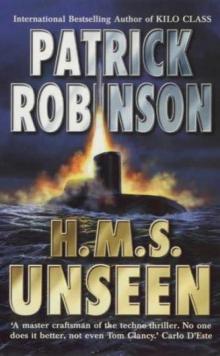 H.M.S. Unseen am-3
H.M.S. Unseen am-3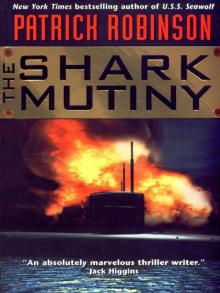 The Shark Mutiny (2001)
The Shark Mutiny (2001)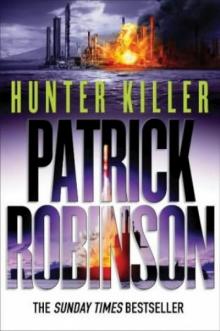 Hunter Killer am-8
Hunter Killer am-8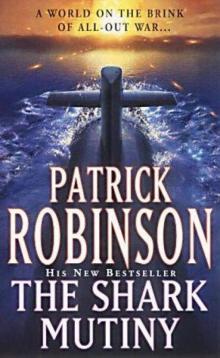 The Shark Mutiny am-5
The Shark Mutiny am-5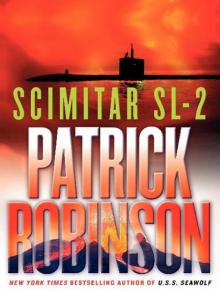 Scimitar SL-2
Scimitar SL-2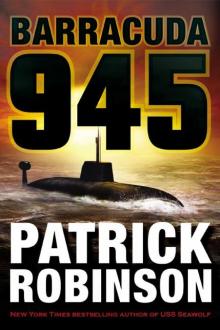 Barracuda 945 am-6
Barracuda 945 am-6 Hunter Killer
Hunter Killer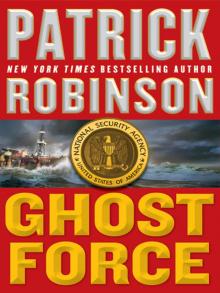 Ghost Force
Ghost Force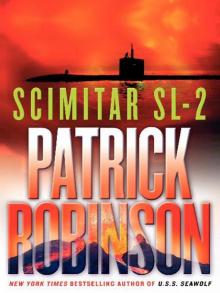 Scimitar SL-2 (2004)
Scimitar SL-2 (2004) Kilo Class am-2
Kilo Class am-2 The Lion of Sabray
The Lion of Sabray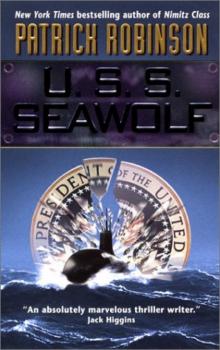 U.S.S. Seawolf am-4
U.S.S. Seawolf am-4 Ghost Force am-9
Ghost Force am-9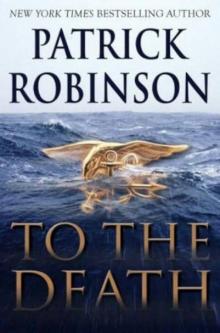 To the Death am-10
To the Death am-10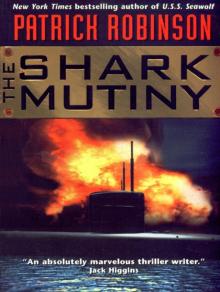 The Shark Mutiny
The Shark Mutiny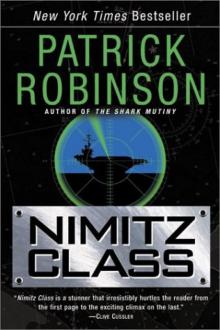 Nimitz Class am-1
Nimitz Class am-1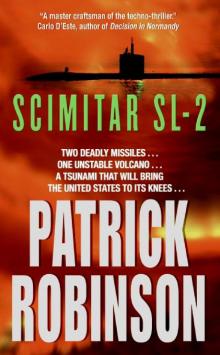 Scimitar SL-2 am-7
Scimitar SL-2 am-7 Barracuda 945
Barracuda 945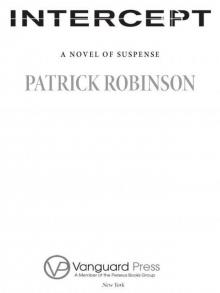 Intercept
Intercept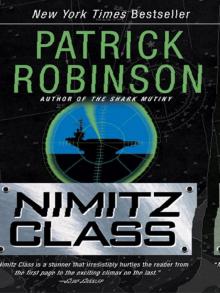 Nimitz Class (1997)
Nimitz Class (1997)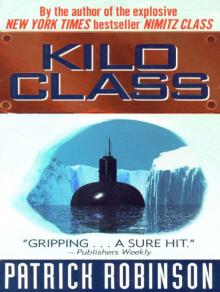 Kilo Class
Kilo Class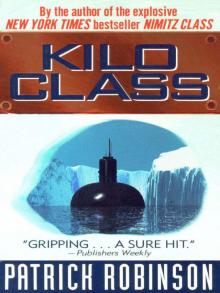 Kilo Class (1998)
Kilo Class (1998) Diamondhead
Diamondhead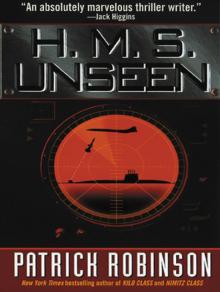 H.M.S. Unseen
H.M.S. Unseen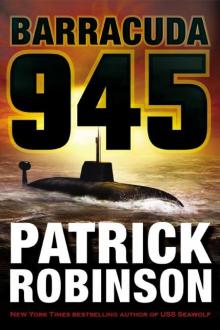 Barracuda 945 (2003)
Barracuda 945 (2003)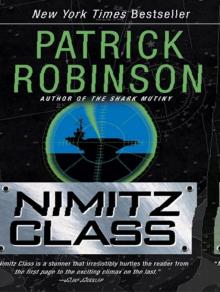 Nimitz Class
Nimitz Class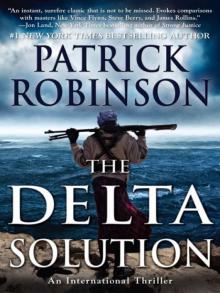 The Delta Solution
The Delta Solution U.S.S. Seawolf
U.S.S. Seawolf